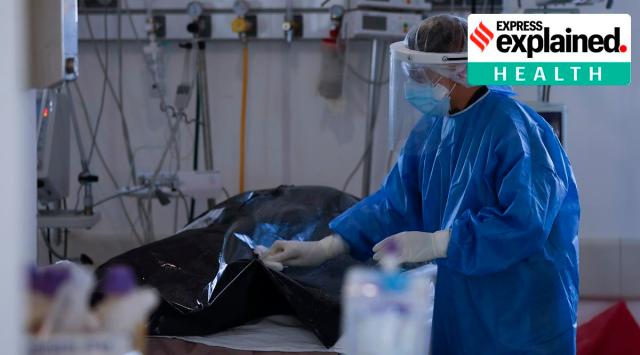New research: Lung damage, clotting signs in postmortem of Covid-19 cases
The researchers believe that the findings could help guide clinicians on treating complications as a result of Covid-19, such as using blood thinners to prevent blood clots from developing.
 A health worker cleans the bodybag of a Covid-19 victim in the intensive care unit (ICU) of a hospital in Argentina, Tuesday, August 18, 2020. (AP Photo: Natacha Pisarenko, File)
A health worker cleans the bodybag of a Covid-19 victim in the intensive care unit (ICU) of a hospital in Argentina, Tuesday, August 18, 2020. (AP Photo: Natacha Pisarenko, File)A new postmortem study of Covid-19 patients has found severe damage to the lungs of the deceased, and signs of blood clotting in major organs. Ten postmortem examinations were conducted. Although the numbers of patients examined is small, this is the largest study to date of postmortem examinations on Covid-19 patients in England, said the researchers.
The study was led by researchers at Imperial College London and Imperial College Healthcare NHS Trust and is published in The Lancet Microbe.
It found that all these patients had lung injuries and early scarring of the lungs as a result of the coronavirus, as well as injury to their kidneys. Nine patients also had thromboses (a blood clot) in at least one major organ (heart, lung or kidney).
The researchers believe that the findings could help guide clinicians on treating complications as a result of Covid-19, such as using blood thinners to prevent blood clots from developing. They also hope that better understandings of the key complications in severe cases could help clinicians develop new ways to monitor and treat the disease.
The team performed full postmortem examinations and biopsies on ten patients ages 22-97 at Imperial College Healthcare NHS Trust hospitals during March-June.
Four of the patients were women. In the patients studied, high blood pressure and chronic obstructive pulmonary disease (COPD) were the most common contributing factors to death. All patients developed a fever and had at least two respiratory symptoms such as a cough and shortness of breath.
Source: Imperial College London
- 01
- 02
- 03
- 04
- 05






































